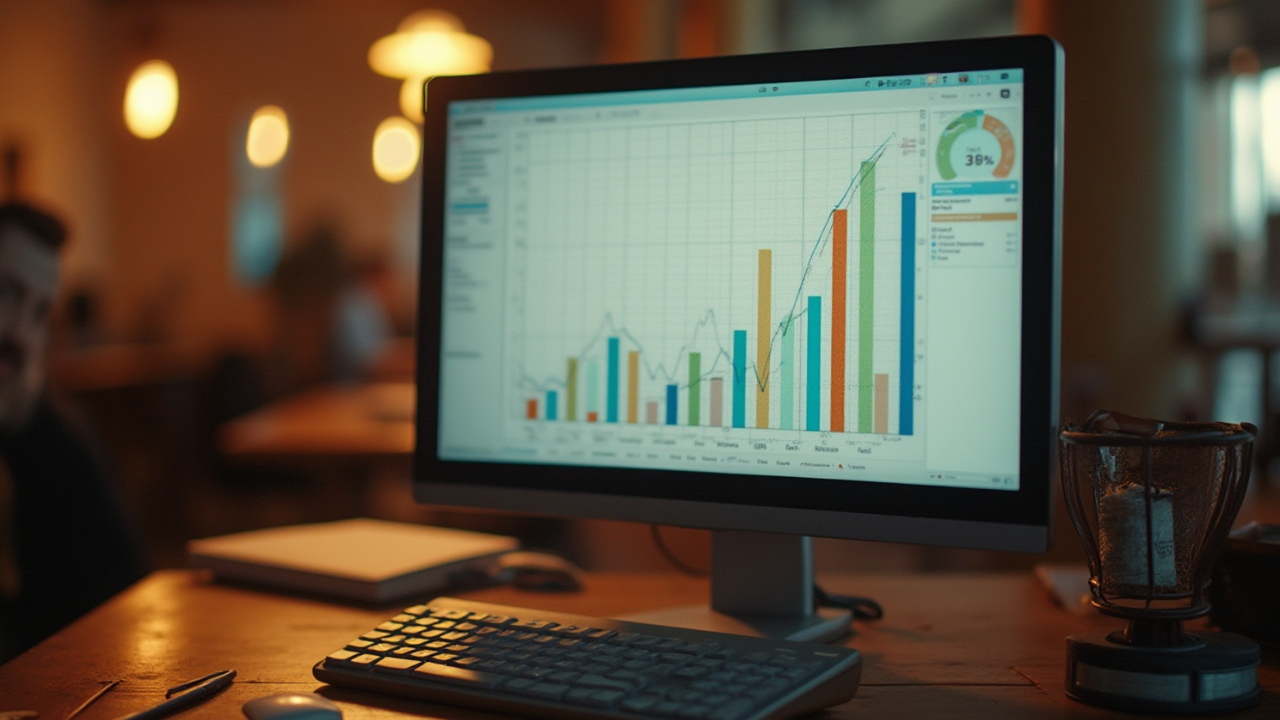
The Ultimate Startup Guide to A/B Testing in Performance Marketing: Mastering Social Media and SEM
A/B Testing Guides for Your Startup
Stepping into the expansive world of digital marketing can feel daunting, especially with all the lingo, acronyms, and technicalities. If you're just starting to dip your toes in, you've probably heard about A/B Testing. Maybe it struck you as overly technical, or you simply didn’t have the time to explore it fully. Well, rest assured that you've come to the right place. This comprehensive guide will enlighten your journey, showing you one of the ways to enhance your paid media measurement efforts using the powerful tool that is A/B Testing.
The Definition of A/B Testing
So, what exactly is A/B Testing? In the simplest terms, A/B Testing, also known as split testing or bucket testing, is a method used in performance marketing to compare two versions of a web page, ad, email, or other campaign element to determine which one performs better. It's particularly useful for startups seeking to optimize their digital marketing strategies. Based on a research, A/B testing can increase conversion rates by an average of 49%. So, the method would help you to reach your goal.
The Goal of A/B Testing
Alright, now that we've defined A/B Testing, let's discuss its goal. The main objective of A/B Testing is to help you make data-informed decisions by comparing different versions of your marketing assets and identifying the one that yields the best results. This process can aid in understanding what drives your audience to take action and can lead to improved conversion rates.
Why A/B Testing is important for startup
A/B testing, also known as split testing, plays a crucial role for startups. By utilizing A/B testing, startups get a golden opportunity to make well-informed decisions about their product, website, and marketing strategies. It's not about guessing or relying on intuition, it's about making data-driven choices.
Let's delve a bit deeper into why A/B Testing is so essential for startups:
- Minimization of Risks: With limited resources, it's mandatory for startups to avoid making costly mistakes. A/B testing allows you to experiment with different options and choose the most effective one prior to a full launch. This stage-wise approach significantly lowers the risk of failure.
- Increased Engagement: Thorough A/B testing can bring a marked improvement in user engagement rates and user experience. Be it an email campaign, a web page, or a social media ad; optimized content tends to register better engagement.
- Higher Conversion Rates: Startups often struggle with the conversion rate optimization (CRO), which is determinant of business growth. A properly implemented A/B test can boost conversions by suggesting alterations that resonate better with your audience.
- Better ROI: An optimized user journey leads to improved sales and therefore better return on investment (ROI). A/B testing not just helps you offer a seamless user experience but also ensures that every dollar spent on marketing counts.
In a nutshell, A/B testing yields practical insights that can guide you in optimizing your strategies and tactics. It helps you understand what works best for your business and how to channel your resources effectively for maximum return.
Getting Started with A/B Testing for Startups
Now that you understand the importance of A/B Testing for a startup, it's time to get started. The first step is to define clear and measurable objectives for your A/B tests. These could be improving click-through rates, increasing conversions, or enhancing user engagement levels on your website.
Next, identify the elements you want to test. This could include your webpage copy, color schemes, CTA placement, form fields, email subject lines, and much more. Ensure you only test one variable at a time to ascertain the impact of each change.
It's also important to select a suitable A/B testing tool that fits your needs. There are a number of these available, such as Google Optimize, Optimizely and VWO, each with their own unique features and benefits.
Finally, remember to thoroughly analyze your test results. A/B testing is an iterative process; use your findings to continually refine and retest your elements for optimal performance. Here's to a data-driven path to success!
A/B Testing Elements on Social Media
A research found that A/B testing on social media can lead to a 20-30% increase in click-through rates. When it comes to social media, there are several elements you can A/B test. These may include the post headline, image, body text, call-to-action (CTA), and posting times. Each of these elements can significantly impact your post’s engagement and conversions.
How to Conduct an A/B Testing on Social Media Advertising
Conducting an A/B test on social media is fairly straightforward:
- Define your testing goal: This could be to increase click-through rates, enhance engagement or improve conversion rates.
- Choose one element to test: Pick one element (e.g., headline, image, body text) to change in the variant. Changing more than one element at a time can confuse results.
- Split your audience: Ensure that an equal number of your audience gets exposed to both versions.
- Conduct the test: Publish both versions and allow for interaction.
- Analyze the results: After a sufficient time has passed, analyze the performance of both versions based on your defined goal.
By following these steps, you’ll be able to effectively carry out an A/B testing on social media.
How to Analyze the Results of A/B Testing on Social Media Advertising
Once you've conducted your A/B test, the next step is crucial: analyzing your results. Understanding how to interpret the data gathered from your A/B test will provide invaluable insights and guide your future marketing strategies. Here's how you can do it:
- Start by comparing the performance metrics. Note the differences in engagement rates, click-through rates (CTR), and conversions between version A and version B of your campaign.
- Identify which version performed better. Is it A with the more traditional style, or perhaps B with the fresh, innovative approach? Remember, it's not always about which looks better, but rather about which performed better.
- Dig deeper into the data. For instance, you might want to scrutinize specific details such as the time of day when engagement was highest, or whether certain demographic groups responded better to one version over the other.
Note that this analysis is not just about choosing the 'winning' version. It's about understanding why one version worked better and using these insights to enhance your campaigns moving forward. After all, the ultimate goal of A/B testing is continuous improvement.
A/B Testing in SEM
In the world of Search Engine Marketing (SEM), A/B testing can be particularly useful. Based on the recent study by Hubspot, A/B testing in SEM can lead to a 10-20% increase in conversion rates. By comparing two versions of a landing page or an ad campaign, you can find the most effective methods to drive traffic to your website and increase conversion rates.
This largely involves examining two key elements:
- Ad Copy: The text and call-to-action phrases within your ad may dramatically influence click-through rates. By testing different phrases or headlines against each other, you can find what most resonates with your audience.
- Landing Page Design: When a user clicks on your ad, they should land on a page that is visually engaging, easy to navigate, and relevant to the ad clicked. Testing different design elements like color schemes, layout, or button placement can provide significant insights.
How to Conduct an A/B Testing on SEM
If you thought A/B testing was limited to social media, think again! Search Engine Marketing also benefits greatly from such tests. The process may look slightly different compared to social media, but hang tight, we will navigate it together.
So, what does A/B testing on SEM look like? First off, note that A/B testing is as crucial for SEM as it is in social media. It's your path to refining your ad copy, improving click-through rates, and enhancing your overall performance. You might be keen to learn the exact steps, so let's dive deep.
First Step: Identifying the Element to Test
Just like with social media, deciding what to test is your initial move. It might be your headline, display URL, or your ad's description. Your decision here largely relies on what you intend to improve. For example, if you wish to enhance your ad's attractiveness, you may choose to test different headlines.
Second Step: Creating your Test Ads
Once you've made up your mind on what to test, it's time to form your A and B elements. Since this is SEM, it will involve creating two different versions of the same ad, with each having a distinct version of the element you're testing. Do ensure that only one characteristic differentiates the two ads; more could give you skewed results.
Third Step: Setting up your Experiment
Now, you’re ready to set up your A/B testing experiment. Use an ad rotation setting to ensure that your ads are tested objectively. Google Ads offers a handy feature called ‘Drafts & Experiments’ that allows you to split your audience between the two versions of your ad.
Fourth Step: Analyzing your Results
The final step is all about gathering and analyzing your A/B testing data to identify the winning ad – we'll get into more details in the next section. The important thing to remember here is patience. Allow your test to run for an adequate period to achieve valid and reliable results.
A/B testing is your passage towards a potent and efficient SEM strategy. It's all about making the most out of your resources and tailoring your campaigns to your audience's specific needs. Or, to put it simply, it's about achieving more with less. So go ahead, begin your A/B testing journey, and watch as your engagement metrics soar to new heights.
How to Analyze the Result of A/B Testing on SEM
A/B testing in SEM generates a lot of data, which can be cumbersome to sift through if you don’t know what you’re after. So let’s establish what we’re looking for, shall we?
First and foremost, we hone in on the metric that directly links to your SEM campaign's goal. If you aimed for more clicks, analyze the click-through rate (CTR); if the objective was conversions, focus on the conversion rate.
Step 1: Check your statistics: Platforms like Google Ads provide very detailed statistics on each variant. You get info on how many times an ad was shown (impressions), how many people clicked on it (clicks), how much this cost you (Cost Per Click or CPC), how many users performed a particular action (conversions), and so on. These numbers, when juxtaposed, will help you understand which variant was more successful.
Step 2: Look Beyond Standard Metrics: Besides the standard SEM metrics, you might want to consider additional information. Detailed analytics can provide insights into time of day, demographics and geographic location which might aid in understanding why a particular variant fared better.
Step 3: Draw conclusions: Once you gather all the data and put it in perspective, what do you see? Did the variant perform as you expected? If not, you might need to investigate additional factors that may have influenced the campaign. If yes, this would be a good time to implement the winning variant across your entire campaign, right?
But before we call it a day, there’s something else you need to consider. An A/B test gives you data about one specific element of your ad but it doesn’t necessarily say how it will perform when combined with other elements. So while A/B testing is a powerful tool, remember, it's just one tool in the box. Sometimes, an in-depth conversion rate optimization strategy in conjunction with A/B testing can provide a holistic view of your overall SEM performance.
To sum up, analyzing the result of an A/B test in SEM involves looking at the numeric data, contextualizing it and then interpreting the results accordingly. It requires patience and precision, but rest assured, it's worth it!
If you're aiming to elevate your performance marketing strategy, you've landed at the right spot. You can trust KPI Media, a renowned Singapore performance marketing agency, to push your startup to reach new heights in growth. We do this through our bespoke media buying services, complemented by advanced automation and analytics techniques.
Our differentiator is our KPI Guarantee - we pledge to cut your retainer fees by 50% if we do not achieve your campaign targets. Additionally, we offer adaptable month-to-month partnerships along with access to our award-winning expertise. As a valued client of KPI Media, you'll reap the benefits of having a dedicated team, custom real-time reports, and the advantage of exploring new channels with minimal expenditures.
Our versatility is one of our finest points, allowing us to specialize across various industries while focusing on the APAC region. Our holistic approach to marketing ensures you receive valuable, localized insights that drive the growth of your business. Don’t miss the chance for a free, no-strings-attached growth consultation (valued at $250) with our Chief Growth Officer.
Don't hesitate! Book your session today and let us craft a paid media strategy that aligns perfectly with your objectives.
More Blogs



Let us build your acquisition engine
Our Founder will personally propose a custom media plan to crush your KPIs.
.png)







_%20cover.png)







